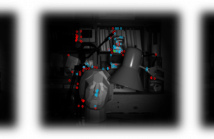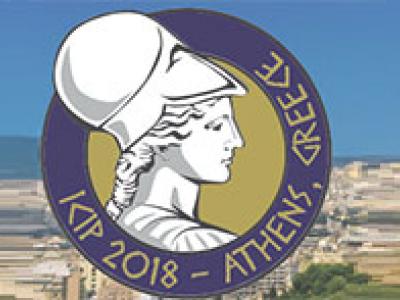- Image/Video Storage, Retrieval
- Image/Video Processing
- Image/Video Coding
- Image Scanning, Display, and Printing
- Image Formation

- Read more about MULTIPLE LAYERS OF CONTRASTED IMAGES FOR ROBUST FEATURE-BASED VISUAL TRACKING
- Log in to post comments
Feature-based SLAM (Simultaneous Localization and Mapping) techniques rely on low-level contrast information extracted from images to detect and track keypoints. This process is known to be sensitive to changes in illumination of the environment that can lead to tracking failures. This paper proposes a multi-layered image representation (MLI) that computes and stores different contrast-enhanced versions of an original image. Keypoint detection is performed on each layer, yielding better robustness to light changes.
- Categories:
 19 Views
19 Views
- Categories:
 8 Views
8 Views
- Read more about RECOGNIZING FINE FACIAL MICRO-EXPRESSIONS USING TWO-DIMENSIONAL LANDMARK FEATURE
- Log in to post comments
- Categories:
 27 Views
27 Views
- Read more about HIERARCHY OF GANS FOR LEARNING EMBODIED SELF-AWARENESS MODEL
- Log in to post comments
poster.pdf
- Categories:
 13 Views
13 Views
- Read more about UAV CINEMATOGRAPHY CONSTRAINTS IMPOSED BY VISUAL TARGET TRACKING
- Log in to post comments
Camera-equipped drones have recently revolutionized aerial cinematography, allowing easy acquisition of impressive footage. Although they are currently manually operated, autonomous functionalities based on machine learning and computer vision are becoming popular. However, the emerging area of autonomous UAV filming has to face several challenges, especially when visually tracking fast and unpredictably moving targets. In the latter case, an important issue is how to determine the shot types that are achievable without risking failure of the 2D visual tracker.
- Categories:
 20 Views
20 Views
- Read more about Billboard Saliency Detection in Street Videos for Adults and Elderly
- Log in to post comments
- Categories:
 9 Views
9 Views
- Read more about A PRACTICAL CONVOLUTIONAL NEURAL NETWORK AS LOOP FILTER FOR INTRA FRAME
- Log in to post comments
Loop filters are used in video coding to remove artifacts or improve performance. Recent advances in deploying convolutional neural network (CNN) to replace traditional loop filters show large gains but with problems for practical application.First, different model is used for frames encoded with different quantization parameter (QP), respectively. It is expensive for hardware. Second, float points operation in CNN leads to inconsistency between encoding and decoding across different platforms. Third, redundancy within CNN model consumes precious computational resources.
- Categories:
 5 Views
5 Views
- Read more about SHPD: SURVEILLANCE HUMAN POSE DATASET AND PERFORMANCE EVALUATION FOR COARSE-GRAINED POSE ESTIMATION
- Log in to post comments
Pose estimation is highly valued in surveillance systems in the era of big data. However, current human pose datasets are limited in their coverage of the pose estimation challenges in outdoor surveillance scenarios. In this paper, we introduce a novel Surveillance Human Pose Dataset (SHPD).
poster-cqh.pdf
- Categories:
 69 Views
69 Views
- Read more about Light Field Image Restoration for Vision in Scattering Media
- Log in to post comments
Recovering information from contrast-limited, SNR-limited, color-attenuated images in a scattering medium is of paramount importance for the autonomous functioning of robotic agents. The task is challenging due to the transient state of the medium, unknown medium parameters and in many cases the need for fully autonomous operation. This work presents a target-less, calibration-less method for restoring underwater light field images and requires no explicit model of the medium.
ICIPPoster.pdf
- Categories:
 28 Views
28 Views
- Read more about Adaptive local image enhancement based on logarithmic mappings
- Log in to post comments
A new local image enhancement technique is proposed.
It is based on a logarithmic mapping function
that is adapted to the luminance
characteristics of the neighborhood of each pixel.
The method permits to simultaneously increase the luminance in dark regions
and decrease it in bright regions. The result is an image with an overall improved
contrast.
- Categories:
 54 Views
54 Views